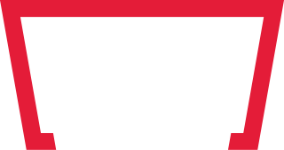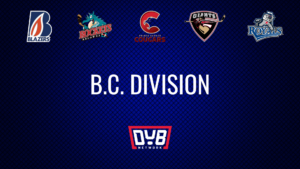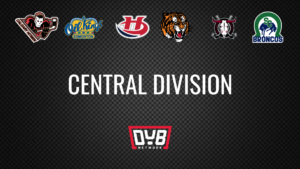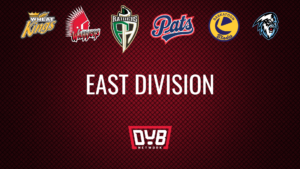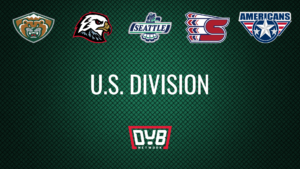I know for most people that when the calendar turns to July, hockey becomes a distant afterthought. However, I’m not one of those people. I don’t know why but I actually find the off season just as interesting as the time when teams are competing on the ice.
There is an intrigue to it that I find really compelling. How will teams prepare for the coming season? By trade? By promotion from within? Moves on the bench? A new GM? All of the above? You can’t tell me there isn’t enough to think about while you’re relaxing on the beach or, if you’re like me, roasting to death in your non-air-conditioned house.
So let’s get to it.
2018 NHL Draft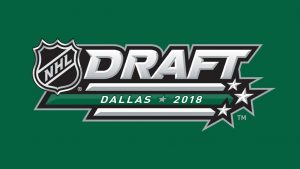
I’m going to go back to the NHL draft for a minute. If you’re familiar with The Pipeline Show then you know that the entry draft is one of the major events on my calendar. Not that I go to the draft in person, extremely boring to watch and if you are covering it you end up missing much of what’s happening while you track down an interview that you want to do. No, for me the fun has always been hosting the live draft coverage for TSN 1260 in Edmonton.
Unfortunately, this year it was an abbreviated show because a CFL game limited us to just the first half of the first round – just long enough for the Oiler pick to come in but we were done before Ty Smith’s selection by the New Jersey Devils.
It wasn’t a great year for the WHL at the NHL draft. In the weeks leading up to the event, I appeared on a few radio shows and the question always came up; why is the WHL weak this year? It’s hard for NHL fans who don’t follow junior hockey to wrap their heads around its cyclical nature.
2017 was a great year for the WHL with seven players being taken in the 1st round including five in the top 16. 2018 was an anomaly, you’ll see the league bounce right back again in 2019 with numbers that could challenge those of 2017.
Just look at the recently announced Ivan Hlinka camp roster for Canada: Peyton Krebs, Kirby Dach, Dylan Cozens, Bowen Byram, Matthew Robertson, Sasha Mutala and Josh Williams. That’s seven guys in camp all with realistic chances of being top 50 picks in 2019 and that list doesn’t include late ‘00-born Nolan Foote who played in the event last year.
It’s becoming uncommon for goaltenders to be taken in the 1st round but there is a decent crop from the WHL available in the Class of 2019. Nolan Maier and Taylor Gauthier are on the Canadian Hlinka camp roster but there is also Dustin Wolf of the Everett Silvertips who will play in the tournament for the United States. Edmonton Oil Kings keeper Boston Bilous is also in the 2019 mix.
So fear not WHL fans; 2018 wasn’t a great showing at the NHL Draft but 2019 is shaping up to be a banner year.
2018 CHL Import Draft
Let’s address the elephant in the room. The CHL/Hockey Canada decision to ban import goaltenders was stupid right from the get go and was thankfully reversed five years later. The idea was that eliminating a handful of European goalies from the top junior leagues in the world would naturally lead to advanced development of more top notch Canadian talent. What happened instead was predictable; those goalies were replaced by non-CHL calibre goalies instead and that’s it.
The ban made no sense to me at the time and my opinion never changed. The other spin-off effect of the CHL’s short sighted manoeuvre ended up helping the USHL and the NAHL. Instead of Vegas prospect Jiri Patera playing the last couple of years in the Dub, he spends a season in Cedar Rapids instead. Now, thankfully, he’ll join Brandon after the Wheat Kings selected him last month.
Overall, seven goalies were taken in the 2018 CHL Import Draft and three of those are headed to the WHL. Lethbridge and Medicine Hat also grabbed netminders this year.
Brandon’s other import selection raised some eyebrows as the team chose another Vegas prospect in defenceman Erik Brannstrom. The Swede was a mid-1st round pick by the Golden Knights in 2017 and has played professionally back home for the past two seasons. Vegas has the option of sending him to the American Hockey League but it’s definitely interesting to see Kelly McCrimmon’s WHL team holding the junior rights to a pair of his NHL prospects.
The Edmonton Oil Kings, who desperately need to find ways to add offence to their team, chose Belarussian forward Vladimir Alistrov. Belarus has a similar development model that the United States has successfully built, where a dedicated U17 and U18 squad play all season together and represent their country in all the international events. Alistrov led the U17 team in scoring with 50 points while playing in just 36 games while the rest of his teammates skated in 45-50 contests. The reason Alistrov only appeared in limited action there is because he split time with the U18 squad where he finished with 20 points in only 14 outings. Those 20 points were 7th best on the older team even though the rest of the players dressed for 45-50 games. Most notably, Alistrov led Belarus in scoring at the World U18s with seven points in five games, tied for 10th in tournament scoring.
Ron Robison
Recently I invited Western Hockey League Commissioner Ron Robison to be a guest on The Pipeline Show so that I could ask him a variety of questions. You can hear that interview in its entirety HERE but I’ll touch on some of the key points.
We began with the CHL import draft and I asked him his personal opinion of the draft and more specifically about the return of goalies to the pool and if he feels it’s a good decision.
“We believe that we are the destination for the top [junior] players worldwide and goaltenders are a critical position so we’re pleased to have them back into our ratio.”
The import draft itself is much more of a recruitment than a traditional draft. It’s not about taking the best player available but taking the best player you know will actually come and play for you. That system opens itself up to criticism and speculation that things aren’t always done above board.
I asked the Commissioner what rules are in place to assure that small market clubs have the same rules as the big budget city teams and that the same holds true through all three CHL leagues.
“We take that matter very seriously,” Robison told me, “We’ve taken a number of steps, we have statutory declarations, we have affidavits signed by our teams, we have new regulations in place where we have the ability to audit teams as far as their activity is concerned. But more importantly we talked about compliance across the Canadian Hockey League to the rules and regulations that we have and we’re hopeful that teams comply.”
I asked Robison what the penalty is in a hypothetical case where a team was found to have paid a large sum of money to a player or his agent to secure their commitment to play. He suggested that the Canadian Hockey League would make the final decision but that heavy fines and a suspension from taking part in the import draft would be the starting point.
WHL Playoffs
The conversation switched to the playoff format used in the WHL. I began by saying that I thought that the 2018 WHL playoffs were one of the most exciting post seasons the league has seen in a number of years but despite that, seeing top ranked teams meeting in the 1st or 2nd round felt wrong. I asked if the league was considering going back to the 1v8 format.
“Any time you are looking at the playoffs purely from a hockey perspective, I agree with you that the 1v8 makes perfect sense,” he said, “however, we have to be conscious of the players and the travel demands and we think the divisional format that the NHL has, mirrors the type of league that we have and we can adopt a similar playoff format and promote divisional play.”
We also spoke about the new 68-game schedule and he explained that lessening the travel for teams was a big reason for scrapping 4 games from the docket.
Travel
His point about travel led me to my next topic. A year ago I spoke with a western conference GM about the potential of every team playing in every city every year as opposed to the current system. That GM cited a desire to do either that or, as he put it, “if we aren’t going to the other conference every year then why go at all?”
Travel and time on the bus is my biggest qualm with the WHL. I think players spend far too much time on buses and in hotels, much more than their counterparts in the OHL and the QMJHL simply because of geography. I asked the commissioner if, to alleviate the travel schedule, if it’s time to consider no inter-conference play during the regular season. His initial answer seemed to skirt the issue so I asked Robison again more directly and he replied with a pretty good counter argument against it.
”Players who are developed in our territory have families throughout western Canada [and the US] and that’s extremely important for the western teams to come into the eastern conference and vice versa because…it’s very important for the families to follow those trips and watch their sons play rather than have to travel to great extents in the regular season to watch them play live.”
That’s a very legitimate reason and nicely sets up a future topic I have planned for an upcoming Flaming Hot Takes.
New TV Deal?
I asked about a new WHL TV deal for 2018-19. Robison said the loss of Shaw TV was definitely felt by the league but that the surge in interest to the webcast of games was noticeable. As for the coming season, it didn’t sound like anything was close to certain.
”We are going to explore some other programming opportunities with Sportsnet, our national partner. We’re hoping to attract more regional games on Sportsnet and certainly that’s a top priority for us in the off season.”
CHL Lawsuit
Lastly, I asked Robison if he was able to comment on the ongoing legal situation facing the CHL in light of damning testimonies given by former WHL players Tyler Maxwell and James McEwan to the Oregon State Legislature back in late February.
“First of all, from a Canadian Hockey League standpoint we’re delighted with the developments in the Maritimes and Quebec. All of the Maritime provinces and the province of Quebec have now exempted from the employment standards act in the provinces the players from the QMJHL and all student athletes from that region which is fantastic. We’re now down to just Ontario and Alberta because in the class action the US teams have not been certified and will not be a part of that action moving forward. So we’re now dealing with, in our case Alberta, and we’re optimistic that with the new government in Ontario that we’ll make some progress there very soon.”
And in regard to what happened in Oregon, Robison spoke candidly about the league being unprepared for what they would hear.
“I think the players that spoke were influenced by this so-called union that is out there and they really mislead the Oregon senate as we’ve indicated so we plan to go back to the Oregon senate, ” Robison said, “We probably underestimated what was going to occur at that particular hearing.”
I asked him if he would have more recent WHL alums with him to share their experience as opposed to Paul Gaustad who was at the WHL table in February.
“Since that time there have been many, many players and parents and billets that have come forward so we will plan to flood the politicians next time around. We had success in Quebec where almost a thousand former players, coaches, parents, billets and education advisors all came forward to talk about preserving this opportunity for players to play in these leagues but more importantly for them to play in these centres. That’s what it’s all about because without the exemption and that protection, moving forward our teams would be at risk.”
Lastly, I asked Robison if the WHL or the CHL has spoken with other amateur sport leagues in Canada to gauge their level of concern or perspective on the lawsuit and how it may affect them. After all, if CHL teams are going to have to start paying players a salary because of travel time or time doing community service, then how will that affect the junior football teams or baseball, lacrosse, etc that also ride buses to other cities and go on school visits or to hospitals?
“Guy, it’s a threat to the entire amateur hockey system but also amateur sport because, as one of the judges in the case indicated ‘how do you distinguish between one level of amateur hockey or amateur sport’? The criteria is very simple; any athlete who’s schedule is controlled and is playing on a competitive team which is providing benefits to those athletes, they are at risk of being deemed to have an employment relationship. That would wipe out Junior A hockey as we know it today, it would wipe out university sports, it would be devastating across the country. In places like Alberta and Ontario where we don’t have that protection, we are at risk of that happening at that would be tragic for young people who want to play sports at those levels.”
I’ve been on the record for a long time now in saying that there are a number of things that I would change about the WHL and junior hockey in general but paying the players minimum wage is 100% not one of them. I’ll address some of those ideas in the coming weeks here in this space but this is more than enough for this round of Flaming Hot Takes.
You can follow me on Twitter @TPS_Guy
